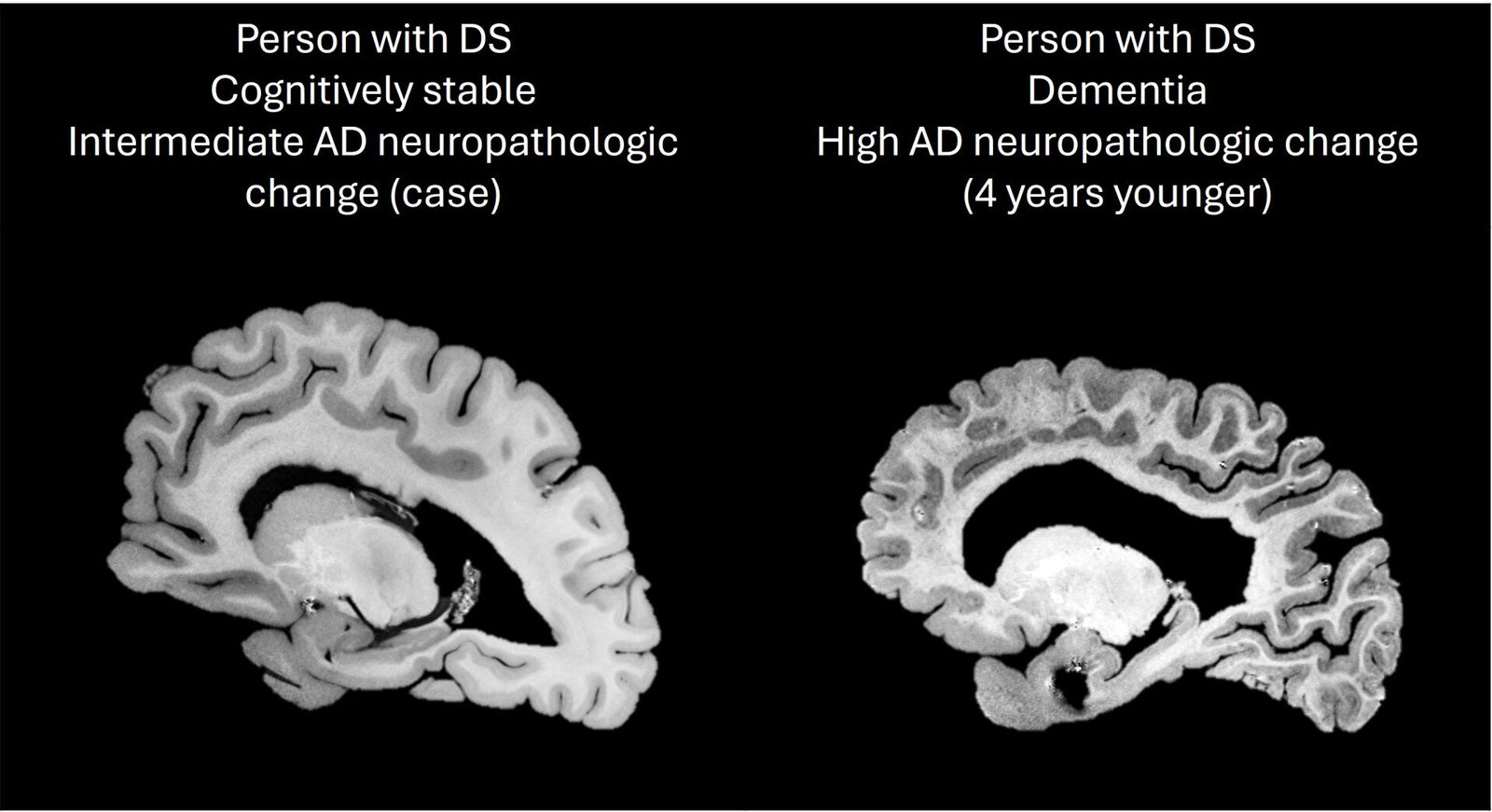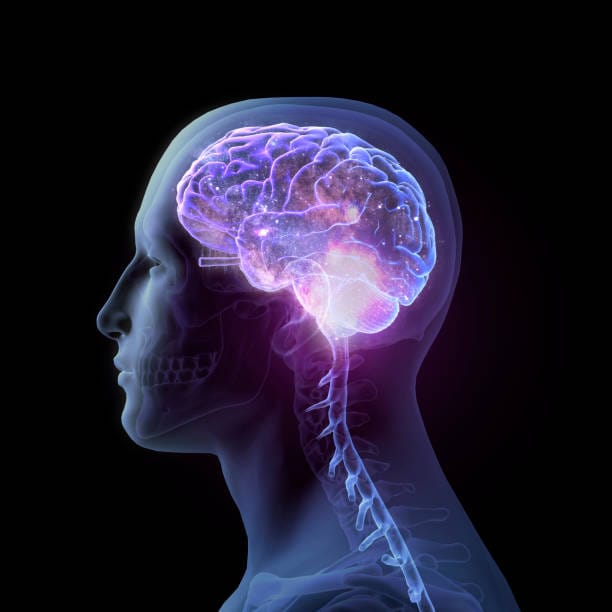People with Down syndrome (DS) face a significantly higher risk of developing dementia as they age, with research indicating that over 90% will experience Alzheimer’s disease (AD), a neurodegenerative condition that impairs cognitive abilities. However, not every individual with Down syndrome develops dementia, sparking questions about why some individuals are more resilient to the condition than others. Recent groundbreaking research from the University of Pittsburgh’s Swanson School of Engineering has taken significant steps toward answering this question, potentially providing insights that could benefit the entire Down syndrome community.
The Connection Between Down Syndrome and Alzheimer’s Disease
Individuals with Down syndrome have a unique genetic makeup due to the presence of an extra copy of chromosome 21, which leads to the overproduction of certain proteins, including amyloid precursor protein (APP). This overproduction significantly increases the risk of amyloid plaques forming in the brain, a hallmark of Alzheimer’s disease. Amyloid plaques, along with tau tangles, disrupt the brain’s ability to function properly, leading to progressive memory loss, cognitive decline, and eventually dementia.
Despite the high prevalence of Alzheimer’s disease in those with Down syndrome, not all individuals are affected in the same way. Some show early signs of cognitive decline while others remain stable throughout their lives. This variation in the onset and progression of dementia in people with Down syndrome has puzzled researchers for years.
A Surprising Case Study: A Cognitive Stable Woman with Down Syndrome
A recently published study, titled “A Neuropathology Case Report of a Woman with Down Syndrome who Remained Cognitively Stable: Implications for Resilience to Neuropathology,” delves into one such unexpected case of Alzheimer’s disease progression in an individual with Down syndrome. The research, which appears in the journal Alzheimer’s & Dementia, examines the case of a woman with Down syndrome who remained cognitively stable for years, despite underlying neuropathology indicative of Alzheimer’s disease.
For ten years, this woman participated in the Alzheimer Biomarker Consortium-Down syndrome Research Study (ABC-DS), a long-term research initiative aimed at understanding the biological markers of Alzheimer’s in people with Down syndrome. This project brought together a multidisciplinary team of researchers, including Elizabeth Head, a professor in the department of pathology and laboratory medicine at the University of California, Irvine, and Jr-Jiun Liou, a postdoctoral scholar in the Department of Bioengineering at the University of Pittsburgh.
Brain Donation and Imaging with 7T MRI Technology
At the time of her passing, the woman’s family graciously donated her brain to science, allowing researchers to investigate the underlying biological changes that occurred in her brain. Her brain was subsequently shared with the University of Pittsburgh’s 7T Bioengineering Research Program, which operates one of the most advanced 7 Tesla MRI scanners in the world. The cutting-edge imaging technology enabled the research team to capture highly detailed neuroimaging of the brain, providing a clearer picture of the brain’s structure and pathology.
Jr-Jiun Liou, who was directly involved in the analysis, expressed the team’s goal of linking neuroimaging with neuropathology to better understand the discrepancies between clinical observations and biological markers. The aim was to use the information from neuropathological datasets to develop more accurate diagnostic and therapeutic criteria for people with Down syndrome who are at risk of Alzheimer’s disease.
A Surprising Discovery: Cognitive Stability Despite Alzheimer’s Pathology
The findings from the brain scans left the research team stunned. Although the woman was cognitively stable at the time of her death, the brain imaging revealed the presence of neuropathology consistent with Alzheimer’s disease. The presence of amyloid plaques and tau tangles indicated that Alzheimer’s pathology was already well underway in her brain. This discovery raised significant questions about the relationship between biological pathology and clinical outcomes.
Despite the clear evidence of Alzheimer’s pathology, the woman’s cognitive abilities remained stable for many years, a rare and puzzling outcome given that most people with similar brain changes experience a steady decline in memory and cognitive function. This case challenged the assumption that amyloid plaques and tau tangles always lead to cognitive decline, suggesting that other factors might be at play in determining whether or not someone with Down syndrome develops Alzheimer’s dementia.
Potential Factors Contributing to Cognitive Stability
Several hypotheses have been proposed to explain why this particular woman maintained cognitive stability despite her brain’s underlying pathology. One potential factor is her high level of education, which may have helped build a cognitive reserve. Cognitive reserve refers to the brain’s ability to adapt to damage or disease by utilizing existing brain networks more efficiently. It is thought that individuals with a higher education level, greater cognitive engagement, or certain lifestyle factors may have a higher cognitive reserve, which can delay or prevent the onset of dementia despite the presence of brain pathology.
Another possibility is the presence of genetic factors that could have contributed to her resilience. It is well-established that genetics plays a significant role in the development of Alzheimer’s disease. Certain genes, such as the APOE ε4 allele, are known to increase the risk of developing Alzheimer’s disease, while other genetic factors may offer protection. Research into the specific genetic makeup of this woman could provide valuable insights into the genetic underpinnings of cognitive resilience.
Implications for Alzheimer’s Diagnosis and Treatment
The findings from this case study have important implications for diagnostic tools and therapeutic strategies targeting Alzheimer’s disease in individuals with Down syndrome. Current clinical trials for Alzheimer’s disease often have narrow inclusion criteria, typically excluding individuals whose neuropathology is present but who do not exhibit cognitive decline. This study suggests that including individuals with hidden pathology—those who may have underlying Alzheimer’s disease but remain cognitively stable—could improve the effectiveness of clinical trials.
By identifying individuals who show hidden pathology but no cognitive symptoms, researchers could develop more inclusive clinical trial protocols, which would allow for a broader pool of participants. This could help identify more effective treatments and therapies for people with Down syndrome, as well as for the general population affected by Alzheimer’s disease.
Additionally, the study opens the door to exploring the role of genetic factors and lifestyle interventions in maintaining cognitive health despite the presence of Alzheimer’s-related pathology. If researchers can identify what protected this woman’s brain from cognitive decline, it could lead to new therapeutic approaches aimed at improving cognitive function in people with Down syndrome and Alzheimer’s disease.
Looking Toward the Future: Research Directions and Potential Impact
The research led by Liou and Head underscores the importance of examining individual case studies to uncover potential factors contributing to cognitive preservation. As Head noted, the discovery made through this study could have profound implications for Alzheimer’s disease research: “If we can identify the genetic underpinnings or lifestyle factors that allowed her brain to function well despite the pathology, we may uncover strategies that could benefit others.”
In the future, this research could lead to the development of personalized medicine approaches for individuals with Down syndrome, focusing on factors that contribute to cognitive resilience. By incorporating genetic, environmental, and lifestyle data into Alzheimer’s diagnostics and treatments, researchers hope to improve the quality of life for individuals living with Down syndrome and Alzheimer’s disease.
This study also highlights the critical role of brain donation in advancing scientific knowledge. The woman who contributed her brain to research made an invaluable contribution to the field, showing how individual participation in scientific studies can lead to major breakthroughs that could have far-reaching benefits for individuals with Down syndrome and the broader Alzheimer’s community.
In conclusion, the surprising case of a cognitively stable woman with Down syndrome and underlying Alzheimer’s disease pathology offers a unique opportunity to better understand the complex relationship between genetics, neuropathology, and cognitive function. It is through such research that we may discover new ways to preserve cognitive health, not only for individuals with Down syndrome but for everyone at risk of Alzheimer’s disease.
Reference: Jr‐Jiun Liou et al, A neuropathology case report of a woman with Down syndrome who remained cognitively stable: Implications for resilience to neuropathology, Alzheimer’s & Dementia (2025). DOI: 10.1002/alz.14479






